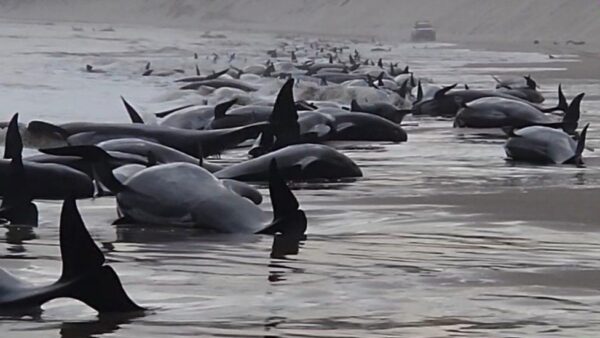Approximately 200 whales have perished and just 35 are still alive as a result of a huge stranding this week in Australia, according to rescue teams.
The pilot whales were discovered Wednesday morning stranded on a Tasmanian beach that was open to the elements.
Rescue attempts are still trying to save some of the whales.
“We are primarily focused this morning on really getting into that rescue operation and getting [the whales] released,” Brendon Clark of the Tasmania Parks and Wildlife Service said.
“We are conscious that some of them may re-beach themselves and so we’ll be monitoring that.”
Approximately half of the whales were thought to still be alive by rescuers at one point.
Following the discovery of more than a dozen dead sperm whales on another beach, most of which were young males thought to be a part of the same bachelor pod. This is the second large stranding of whales in Tasmania this week.
Marine experts have been perplexed by whale stranding cases for many years.
Over 450 pilot whales were discovered in 2020, which was Tasmania’s greatest stranding.
Because they live in vast, closely knit colonies that depend on regular communication, pilot whales are extremely sociable creatures and are widely known for stranding in groups.
In 2020, more than 380 pilot whales perished, although rescuers saved about 100.
The parallels between this stranding and the prior one, including the same species, location, and season, according to wildlife biologist Vanessa Pirotta, are “unusual” and alarming.
She suggested that the whales may have “misnavigated,” followed an ill or confused leader, or been shocked into shallower waters.
Changes in the ecosystem, water temperature, or prey habitats might affect whales due to climate change.
However, she claims that the causes of whale strandings are still a “mystery,” as is the reason Tasmania experiences so many of them.
In addition to the abundance of marine life in the area and the numerous currents that cross the land, more animals may result in more occurrences.
She argues that the “huge island” might be a navigational challenge for creatures that employ echolocation. They suddenly reach shore after traveling over virtually open oceans.

